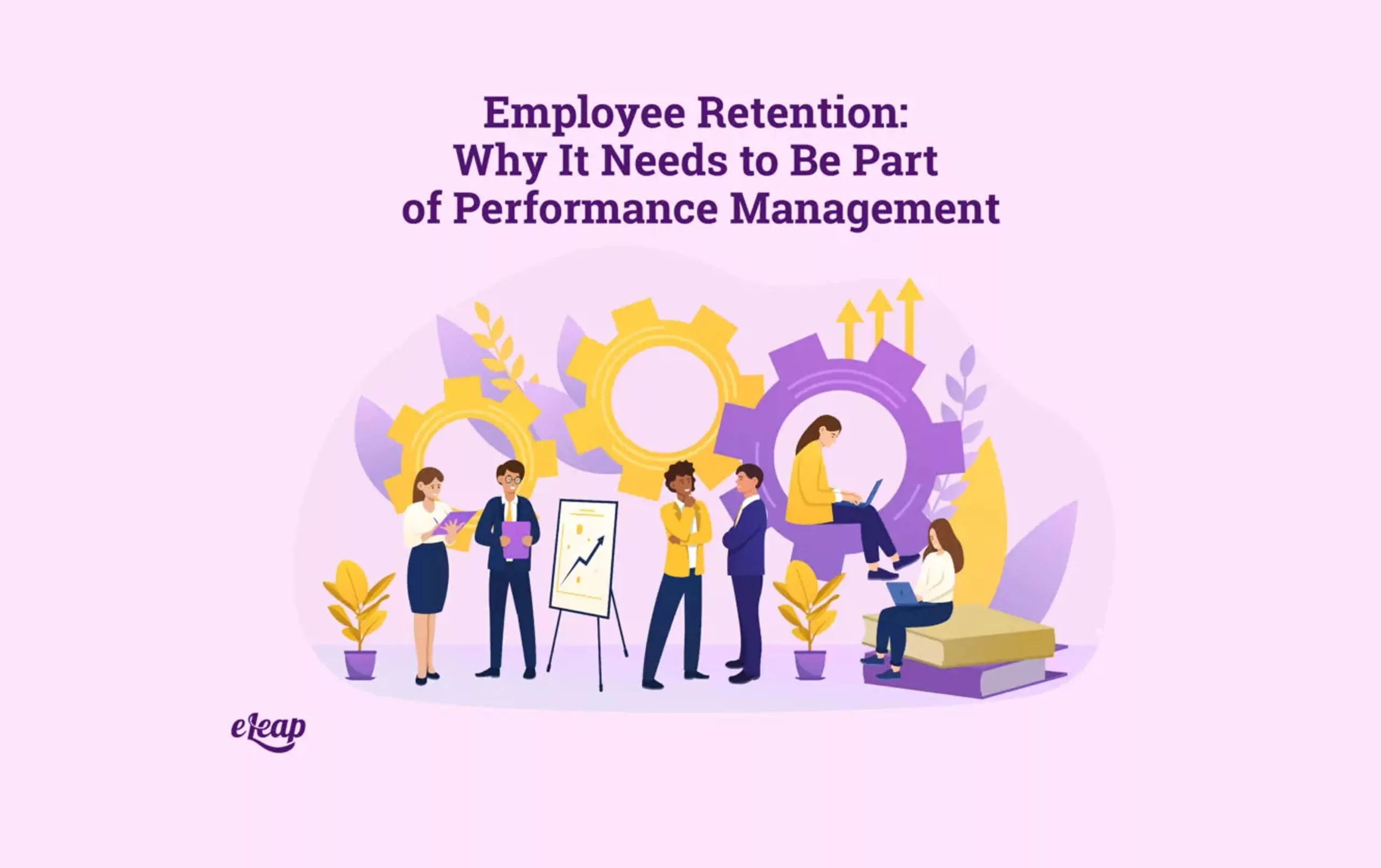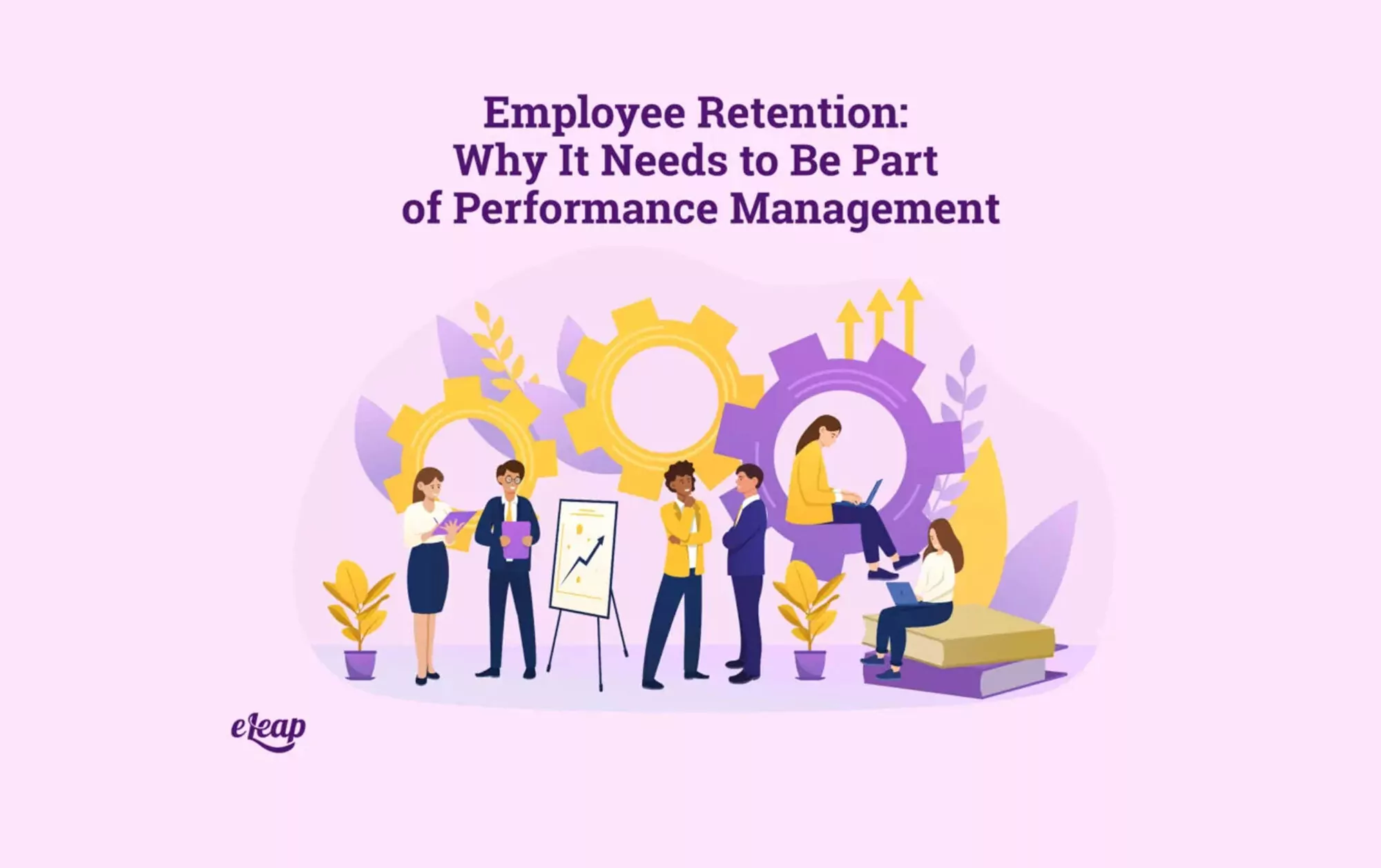Employee Retention: Why It Needs to Be Part of Performance Management

The words “performance management” conjure up images of annual reviews, performance improvement plans, and maybe even lost raises due to performance problems. For those who are on board with the current performance management mindset, those words might call to mind check-ins and one-on-ones, or perhaps feedback sessions. What they probably don’t bring to mind is employee retention, although they should.

The Retention Challenge
What metrics do you use to judge organization success? Chances are good your list includes things like productivity, performance, profitability, year-over-year improvement, and the like. However, employee retention should also be on that list. Why is that?
Simply put, if your organization cannot retain key talent, it doesn’t really matter how productive your teams are or even how much profit you generate per year. High churn and turnover rates are signs that there is something deeply wrong with the business. If you cannot retain employees, your other performance metrics are only telling you part of the story.
For many businesses, retaining employees is a significant challenge, though. In fact, attracting and retaining talent is one of the most sought-after yet often-missed organizational goals. Often, missing the target is due to a failure to understand where retention fits into your strategy.
Put Retention in Your Performance Management Processes
To integrate employee retention into your performance management process, you’ll need to know a few things, particularly as they relate to turnover and what drives employees to leave. While people may choose to leave an organization for almost any reason, some of the most common drivers include the following:
- Dissatisfaction – Employees can be dissatisfied with their work experience for many reasons. They may not feel that management supports them in their efforts. They could feel that they lack opportunities for growth and development and that there is no forward career path with your organization.
Disaffection is one of the simplest to address through performance management. Simply ask questions that surface the necessary information during check-ins and one-on-ones, and then take action to improve employee satisfaction.
- Little Recognition – Most people want to do a good job, but for many, lack of recognition can drive dissatisfaction. When employees regularly give 110%, but management never recognizes, much less rewards, those efforts, it is natural to question why they even bother and even begin to look for employment elsewhere. You can combat this quite easily by paying attention to your employees and their efforts, recognizing high performers, and even rewarding them with things they value.
Don’t assume that monetary rewards are your only options, either. Paid time off, more flexibility in scheduling, and other perks can also offer value and drive better retention.
- Compensation – A significant driver of turnover is compensation. More accurately, a lack of compensation. Take a deep dive into your compensation for talent and identify how it compares to your competitors. Again, don’t limit your comparison to monetary compensation.
Today’s workers will often accept less in terms of salary or hourly rate in exchange for other benefits that offer value to them, such as employer-sponsored wellness plans, additional paid time off, and the like. However, as a note, it is important to decouple performance management from compensation. When you tie an employee’s ability to pay their bills to arbitrary performance metrics, you immediately increase the chances that they will leave for greener pastures.
- Training and Development – Managers often don’t connect L&D with PM. However, the truth is that they are two sides of the same coin. You cannot improve performance without learning and development. And the truth is that employees will leave an employer very quickly if they feel they are not being provided with opportunities to improve themselves and grow their careers.
Employers struggling with chronic high turnover rates should take a long, hard look at their L&D strategy and how well it dovetails with their performance management efforts. Often, better alignment between the two will result in better retention over the long-term.
- Importance – Employees want to feel that what they do matters. However, the value of their efforts can be hard to see at times, particularly when they get bogged down in the day-to-day ebb and flow. For instance, customer service representatives may become frustrated and disenchanted with their job duties after a week filled with challenging customers and problems but helping them see the impact of their efforts and the importance of their job to the business as a whole can drive better retention.
The Single-Most Important Metric
While the metrics discussed above are all important factors in both performance management and employee retention, the single most important one is fair treatment by supervisors. More than compensation, more than training and development, and more than understanding the impact of their efforts on the company’s trajectory, the way an employee is treated by his or her manager/supervisor will immediately affect retention.
Simply put, if an employee is not treated fairly by a manager, there is a good chance that they will immediately look elsewhere for employment. Most will not even escalate their problem to higher management. What does this mean for companies striving to improve performance management and employee retention?
Simply put, it means that organizations need to make a significant investment in developing managers and supervisors. Leadership and management skills should be taught, including soft skills, not just so-called hard skills. Communication, empathy, compassion – these are vital attributes in a manager and will have a dramatic impact on performance and retention.
Build a Stronger Team
Employee retention should be one of the most important focuses of managers and must play a role in performance management. The tips discussed above should help identify hidden drivers of turnover and churn, as well as illustrating potential ways to change the situation, drive better performance, and build a stronger, more engaged team that stays with the organization for the long-term.